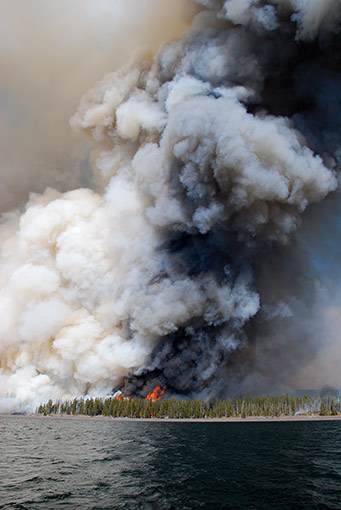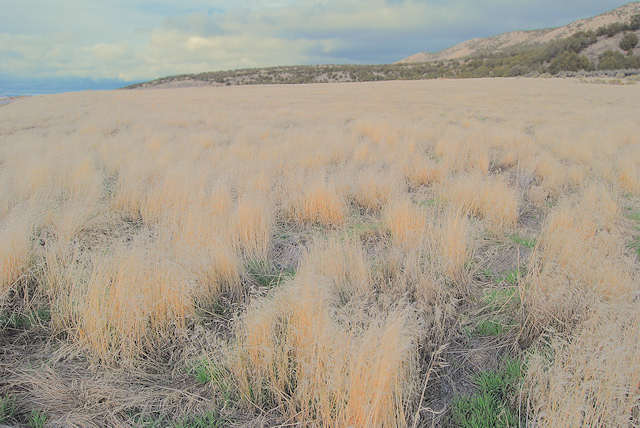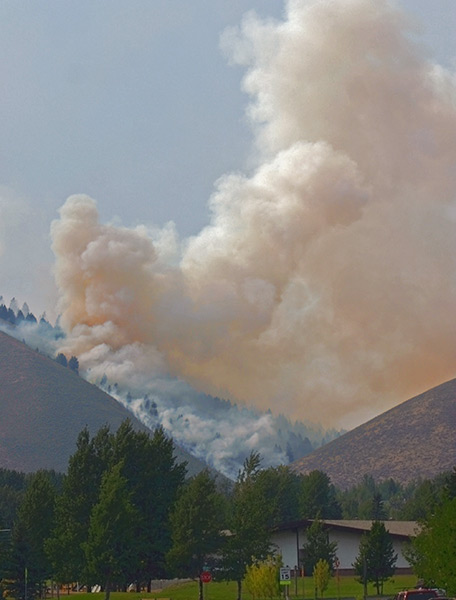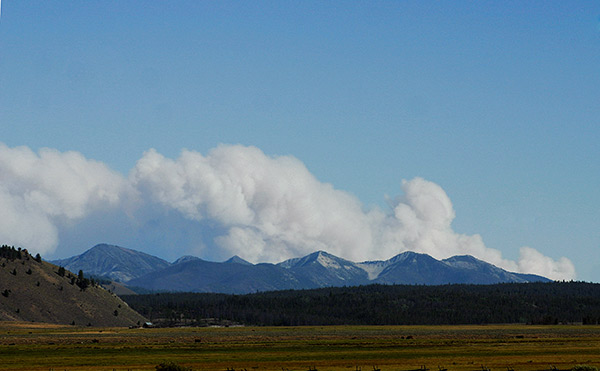Warren is a partial ghost town in Western Idaho. There is no longer any mining going on there. Much of the timber for miles around has burned in the last 20 years. Now it is threatened by the Zena/Loon Fire.
Warm Lake, about 50 miles to the south of Warren may burn down too. It is an extended area of summer homes around and near this lake that lies in a mountain valley.
This is all very important wildlife habitat. The forest fires of recent years have done much to stimulate the growth of grasses and forbs, leading to an increased elk (and, therefore too) wolf population. The effects on the streams are not beneficial because the the ground mostly decomposed granite (sand). Erosion sends it into the streams where it fills up the salmon and steelhead spawning beds.
Story in the Idaho Statesman. Residents of historic Warren urged to flee fire (see video). in Warm Lake, a fire might prevent residents from returning for their valuables. By Heath Druzin.
-Update. Early August 11.
Inciweb seems to have collapsed, leaving a big hole in official fire news. Regarding this fire, however, it is one of many medium sized forest (not range) fires that have started in the mountains to the north, northeast, and southeast of McCall, Idaho. This is in Western Idaho.
A number of small former ghost towns in the backcountry like Warm Lake and (gravel road access only) like Warren, Yellow Pine, and Stibnite are threatened. Given dry weather and wind some of these fires could burn together, although so much of this country has burned in the last 20 years that the fuel load has been reduced somewhat (this is just my opinion). Stibnite is the most remote. I didn’t know anyone really lived there anymore.
-Update. Late August 11.
Inciweb is finally back online. Northwest of large town of McCall, the East Zone Fire Complex (three forest fires) has expanded to 86,953 acres. These are the fires threatening the backcountry hamlets of Warren and Secesh. The complex remains just 15 percent contained. The towns of Secesh and Warren as well as historic sites and bridges remain threatened. Inciweb says, Weather conditions are expected to become more severe over the weekend, with lower relative humidities, higher temperatures and stronger winds. Along the ridgelines, wind gusts of 25 mph may be experienced. These conditions will contribute to more active fire behavior. Map of all Western Idaho road closures and fires as of Aug. 11.

Warren, Idaho on the afternoon of Aug. 9, 2007.
Boat trips down the Salmon River from Corn Creek are now prohibited.
The Cascade Complex Fire has a perimeter of 44,036. This is about 15 miles NE of Cascade. This one is the threat to the Warm Lake summer home area. Extreme fire behavior was reported, but backfires are being lit that might save structures. The Warm Lake Highway (from Cascade) is closed.
The Rattlesnake Fire has burned 57,608 acres 25 miles south of remote Elk City in north central Idaho. It is about 3 miles from the group of cabins named “Dixie.” It is burning along the Salmon River and well up into the Salmon River breaks. So far the fire is completely uncontained. Map from Inciweb.
The Landmark Fire Complex it as 47,058 acres and threatens tiny Stibnite, east of Yellow Pine in Valley County. It consists of 3 fires. It’s 29 percent contained.
Update Aug. 12.
These fires put up huge plumes Sunday (very impressive on Earth satellite). Smoke covered most of northern Idaho and NW Montana. The latest report on the East Zone Complex reports that flames are crowning at 200 feet high on the outskirts of Warren, Idaho. Some buildings now lost.

Late afternoon fire plumes in central Idaho, Yellowstone and vicinity (circled in red).
The Landmark Complex incident page indicates an inversion has kept planes grounded, and supply is on horseback and mules.
post 1429


















